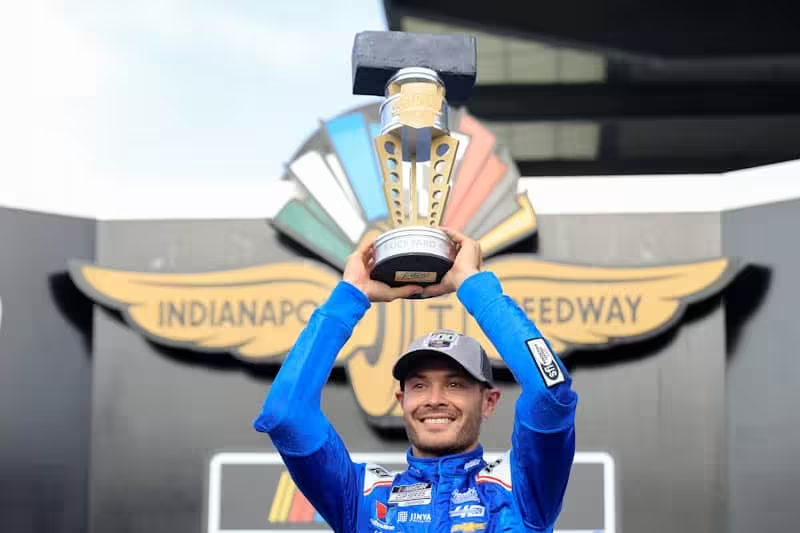Who… should you be talking about after the race?
NASCAR returned to the Indianapolis oval for the first time since 2020, 30 years after stock cars first raced on the famed oval. Still fresh off running the Indianapolis 500 in May, Kyle Larson was among the favorites to win the Brickyard 400 on Sunday. Differing fuel strategies and 10 caution periods kept Larson from leading a lot of laps on Sunday — he led twice for eight of them — but didn’t keep him out of victory lane.
Larson came to pit road for what would be his final time several laps later than the cars in front of him, and was able to use the extra fuel to his advantage, not having to worry about saving what he had in the tank. He raced his way to third and that might have been as far as he got, but a late caution for Kyle Busch’s spin set up a pair of overtime attempts.
Leader Brad Keselowski finally had to duck onto pit road for fuel coming to the first overtime green, and that left Larson in the preferred line with nobody in front of him. He was able to get past Blaney on the restart and hold Blaney and a charging Tyler Reddick off through a second overtime restart until the final caution that ended the race.
And don’t forget Todd Gilliland. Gilliland didn’t get a lot of fanfare, but he ran well all day, leading a lap midrace, and was able to have the No. 38 in excellent position for the overtime restarts. He was strong enough to finish sixth, his third top 10 of 2024.
What… is the big question leaving this race in the rearview?
What’s with the insane fuel mileage some cars are getting lately?
The magic number at Indy was supposed to be 41-43 laps, but most of the top 10 exceeded that number. Keselowski managed well over 50 laps on a tank before giving up the lead.
This follows the June 30 race at Nashville Superspeedway, where Joey Logano was able to run more than 30 extra laps of overtime without having to stop, even though his team thought he only had a couple of overtimes’ worth at best.
Are teams sandbagging their fuel numbers? That’s certainly a probablilty as teams hold their cards close to their vests. However, we have seen drivers run out trying to stretch a tank, and that costs so much track position that overplaying the strategy doesn’t make sense.
The current car, with much less horsepower than its predecessors, isn’t going to get the same…
Click Here to Read the Full Original Article at …

